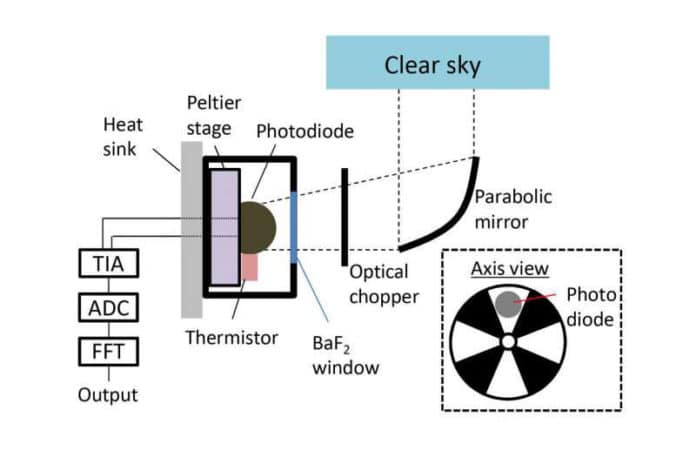For the first time, an international team of scientists demonstrated that it is possible to generate a measurable amount of electricity in a diode directly from the coldness of the universe. They produced electricity by trapping the temperature difference between Earth and space.
The study is published in the journal Applied Physics Letters, which provide a potential path to generate electricity like solar panels but it can power electronics at night.
A very common disadvantage of the solar panels is that they need sunlight to generate electricity, meaning it can be helpful during day time only. What, if you want to power during the night?
The researchers have observed that for a device on Earth facing space, having a frigid temperature, the chilling outflow of energy from the device can be harvested using the same kind of physics used to harness solar energy.
“The vastness of the universe is a thermodynamic resource,” said Shanhui Fan, an author on the paper from Stanford University in the US. “In terms of optoelectronic physics, there is really this very beautiful symmetry between harvesting incoming radiation and harvesting outgoing radiation.”
Rather than taking advantage of the energy used as a normal solar cell, the negative illumination effect allows electrical energy to be harvested as heat leaves a surface. Although today’s technology does not efficiently capture energy on these negative temperatures.
By showing their device in the direction of space, whose temperature approaches mere degrees from absolute zero, the group could detect enough temperature differences to generate power through the initial design.
“The amount of power that we can generate with this experiment, at the moment, is far below what the theoretical limit is,” said Masashi Ono, another author on the paper.
The team found that its negative illumination diode produced about 64 nanowatts per square meter, a small amount of electricity. However, an important proof of concept, that the authors can improve on by enhancing the quantum optoelectronic properties of the materials they use.
The calculation made after the diode generated electricity showed that, when the atmospheric impacts are considered, the current device can theoretically generate up to 4 watts per square meter. This is approximately one million times what the group’s device generated and is enough to power your electronics during the night. By comparison, today’s solar panels generate 100 to 200 watts per square meter.
While the results show promise for ground-based devices directed to the sky, Fan said the same principle could be used to recover waste heat from machines. For now, he and his group are focusing on improving their device’s performance.
